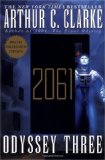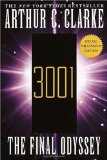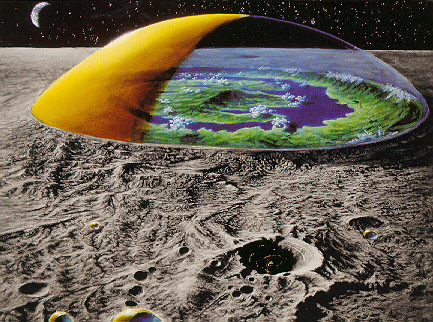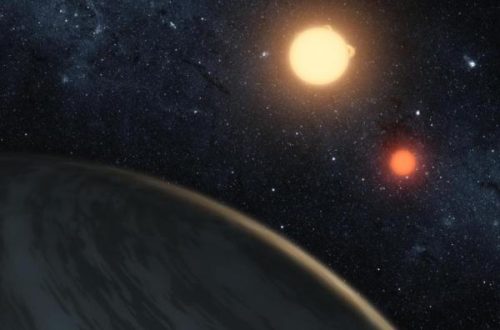Non-Rocket Spacelaunch – Space Elevators in Fiction
This is the fourth and final part of the space elevator article of the non-rocket spacelaunch methods article series. This post will focus on references to the space elevator concept in fiction.
The first mention of anything remotely similar to a space elevator was the beanstalk in the children’s fairy tale called Jack and the Beanstalk, published in 1807. In this story a plant grows up into the sky enabling Jack to climb it and see what’s up there. This is why the word “beanstalk” has been coined as another name for a space elevator.
Now on to more serious literature:



My all time favorite book series including a reference to the space elevator is the Mars Trilogy by Kim Stanley Robinson. Red Mars focuses on the early colonization of Mars, Green Mars focuses on the terraforming of Mars and Blue Mars focuses on the long-term results. The Martians is an extra book that contains short stories that take place over the timespan of the original trilogy of novels. The trilogy depicts space elevators on Earth and on Mars whose cables are made of carbon nanotubes which are manufactured on an asteroid, and lowered into the atmosphere, using the asteroid as a counterweight. Red Mars depicts what happens when the cable is cut at the asteroid anchor point.




Another interesting series is the Space Odyssey by Arthur C. Clarke. The four volumes are: 2001: A Space Odyssey, 2010: Odyssey Two, 2061: Odyssey Three and 3001: The Final Odyssey. In 2061: Odyssey Three, the space elevator is made possible after a groundbreaking discovery that Jupiter’s core (now in fragments around the orbit of the newborn star) had been a solid diamond. As the hardest substance in nature, suddenly available in vast quantities, it facilitates the construction of a solid elevator rather than the more common tether structure previously envisaged. In 3001: The Final Odyssey, a ring habitat now exists around the Earth that is connected to the surface via four, solid-diamond space elevators.



The space elevator concept is also present in A Time Odyssey series co-written by Arthur C. Clarke and Stephen Baxter. The series is based on the Space Odyssey series and it takes the story to a new level. The three novels are: Time’s Eye, Sunstorm, Firstborn. In this series, not-so-benevolent godlike aliens start an endless mission to regulate the development of sentient life in the Universe, in order to prevent all other species from harnessing too much of its energy, which would only accelerate the inevitable entropic death of the Universe, thus rendering sentient life impossible at the end of the universe. Consequently, these “Firstborn” are destroying other intelligent species. To preserve a record of these eradicated species, the Firstborn create a new alternate universe containing the species’ homeworld in different time periods.

Arthur C. Clarke was a pioneer of the space elevator concept, therefore it is not surprising that he wrote a lot of books on the subject. A very good such example is The Fountains of Paradise. It is about the construction of a space elevator on a mountain top on Earth in a fictional island nation.
Other novels include: The Last Theorem and The Songs of Distant Earth. He also wrote a collection of stories called Across the Sea of Stars. Some of those stories include a reference to a space elevator.
Books by other authors having space elevator references include: Feersum Endjinn by Iain M. Banks (the author of The Culture novels), Mercury (part of the Grand Tour novel series) by Ben Bova and Rainbow Mars by Larry Niven.



And finally another good series of novels set in the Uplift Universe by David Brin also has a reference to a space elevator. The series is made up of two trilogies. The first one includes: Sundiver, Startide Rising and The Uplift War; the second one includes: Brightness Reef, Infinity’s Shore and Heaven’s Reach. In this series humans have uplifted to sapience species such as dolphins and chimpanzees. In the first novel, Sundiver, Earth has a space elevator.
Also it is worth mentioning the appearance of space elevators on television. In Star Trek: Voyager‘s episode “Rise” there is a broken maglev space elevator which the crew attempts to fix.
In Doctor Who, “The Waters of Mars” it is mentioned that a space elevator was constructed off the coast of Western Australia in the year 2044.
There are also space elevators in two Gundam series. In Mobile Suit Gundam 00, all the superpowers have a space elevator (Permanent Orbital Station) of their own, linked to a Solar Power Satellite array used to harness solar energy for their use. They play a critical plot role in power balance. In Turn A Gundam there is an ancient hypersonic skyhook which has been maintained operationally by nanomachines over thousands of years. An ancient mass driver is also used for transporting space-vessels from earth’s surface to the skyhook.
Space elevators are quite common in science-fiction games. The best such examples are the Halo and Civilization game series.
Links to the other articles in this series
Space Elevator:
- Non-Rocket Spacelaunch – Space Elevator
- Non-Rocket Spacelaunch – Space Elevator Safety Issues
- Non-Rocket Spacelaunch – Extraterrestrial Space Elevator Concepts
Tether Propulsion:
- Non-Rocket Spacelaunch – Tether propulsion
- Non-Rocket Spacelaunch – Tether satellite missions
- Non-Rocket Spacelaunch – Tether propulsion safety issues
- Non-Rocket Spacelaunch – Tether propulsion in fiction
Would you like to receive similar articles by email?






One Comment
elisa
aurther c clarke book The Fountains of Paradise is a very good read.